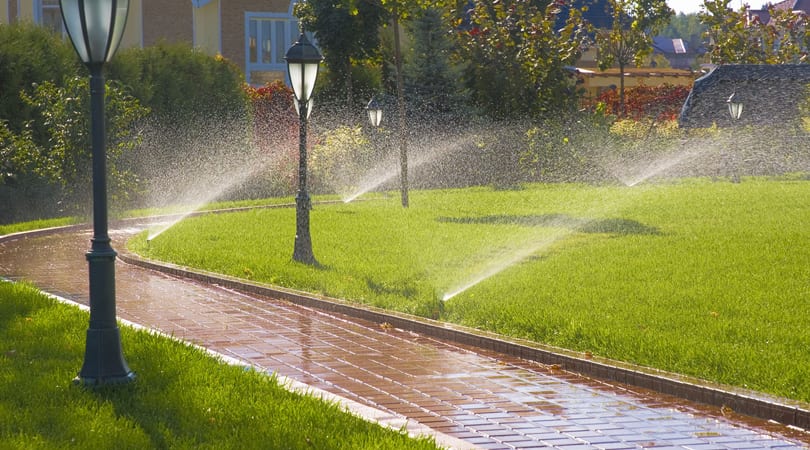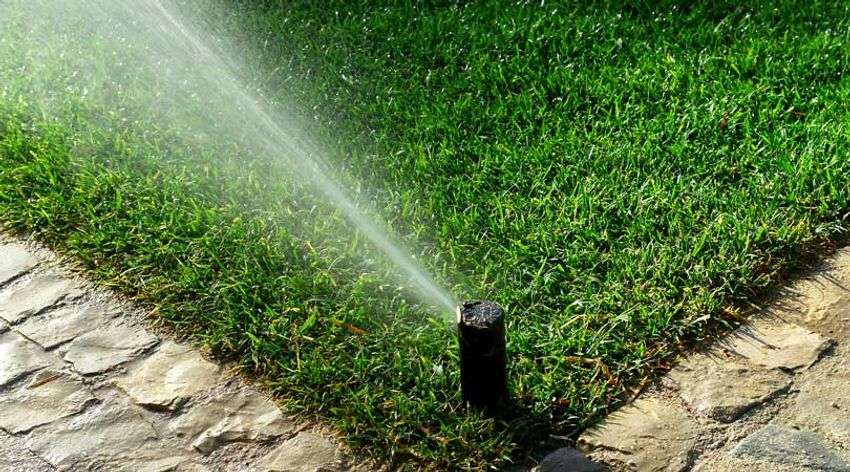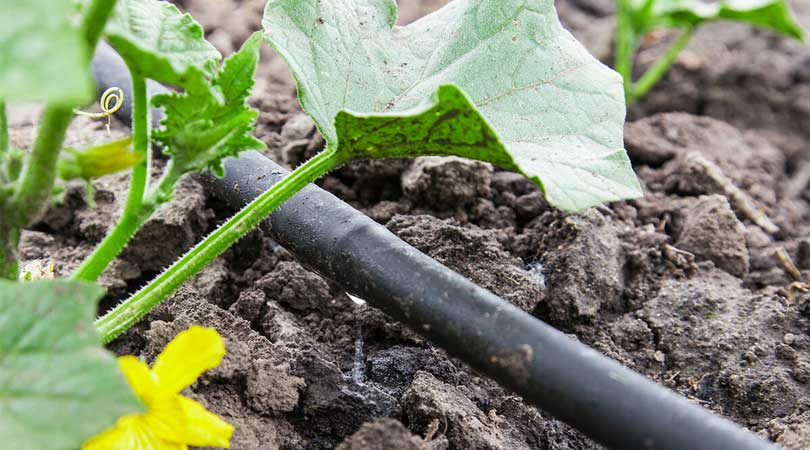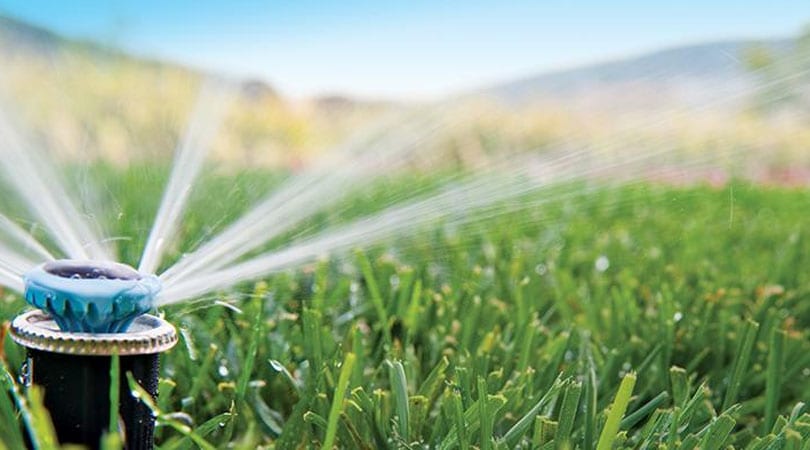
Irrigation systems deliver water to grass, flowers, shrubs, and trees so they flourish. These brief descriptions of the most common home irrigation systems can help you understand the benefits and drawbacks of each and how they can work together for optimal yard care.
Surface Irrigation
This is the most common form of irrigation worldwide and probably how you water your yard now. It involves watering the soil’s surface and allowing the water to leach downward. If you water using a hose and a sprinkler, this is surface irrigation.
Unfortunately, surface irrigation is laborious and wasteful. Some plants receive water when they don’t need it, while others in hard to reach locations do not receive enough. Since watering is such a chore, plants and trees rarely receive the water they need to establish the deep roots necessary for health and vigor.
Related Article: Perfect Lawn Care: The Definitive Guide.
Sprinkler Irrigation
Sprinkler irrigation systems conserve water, shut off when it rains, and do a better job of reaching all vegetation on your property. By dividing the space into zones, choosing appropriate sprinkler heads for the conditions of each, and connecting the system to a timer and sensors the yard practically waters itself.
 Sprinkler heads may sit above ground or pop-up when the system initializes. They can remain in a fixed pattern ideal for select shapes, or broadcast water back and forth or in circles over the landscape.
Sprinkler heads may sit above ground or pop-up when the system initializes. They can remain in a fixed pattern ideal for select shapes, or broadcast water back and forth or in circles over the landscape.
Sprinkler irrigation systems do waste some water due to evaporation and spray, especially when it is windy. They may not be the ideal choice on a steep slope or if your property has very sandy or clay-based soils. However, they are substantially more efficient and convenient than surface irrigation.
Drip Irrigation
Drip, or trickle, irrigation is a good solution in areas with various shrubs, trees, flowers and grass, all needing different amounts of water. Low-volume drip irrigation systems allow you to customize water delivery to prevent plant loss and water wastage. Studies indicate well-designed, properly installed systems use substantially less water.

“Drippers” or emitters” drop water directly towards the plant’s root to establish the ideal moisture level. They work well in any topography, allow water to penetrate problematic sandy or clay-based soils, eliminate overspray, and some allow liquid fertilizer application to save time and energy.
The filters used for drip irrigation require flushing and improper installation can impede root development. The tubing is also susceptible to damage from tools, sunlight, foot traffic, and animals.
Blended Irrigation
Fortunately, today’s home irrigation systems offer a blend of technologies. It’s not a matter of either a sprinkler system or a drip irrigation system. Rather, a good system blends both to provide the most efficient and cost-effective solution for your yard.

For instance, you may have an expansive flat area and a planter packed with various plants and trees. A sprinkler system with rotors could efficiently deliver water over the large area, while low-flow drip irrigation could release the measured amounts of water each plant and tree needs.
Today’s systems also include sophisticated, programmable controllers to manage multiple zones and start times, and they monitor the weather. Regulators and valves also control water pressure to deliver an even flow despite the fluctuations on your property.
*****
Obviously, choosing and installing an irrigation system properly requires expertise and Blue Jay Irrigation is the Southwestern Ontario professional you can rely on. We’re a Certified Irrigation Contractor with over 30-years of experience and we’ve performed more than 5,000 installations.
We’ll determine which components work best on your property and design an irrigation system to meet your needs and budget. We’re endorsed by Rain Bird® and Hunter®, WSIB insured, and have an A+ Better Business Bureau rating. Contact us for a free quote and discover how easy irrigating your yard should be.

